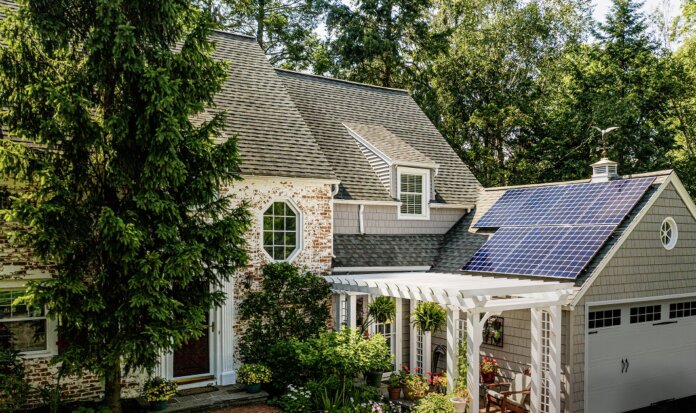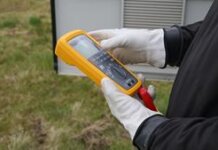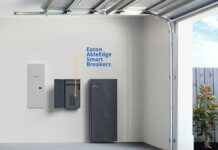I’ve been in the solar industry for 15 years, and I’ve long held the “solar coaster” view that the only constant is change. But 2020 raised the bar on what passes for change, and it hasn’t been what I’d describe as fun.
Although I hope to never repeat its tumult, 2020 was a year rich in lessons in how the solar industry can succeed in tough times. And I believe we will emerge from 2020 as a smarter, more efficient industry.
Here are three key takeaways from 2020:
#1: Confidence is a choice
Crises call loudest for what they put in shortest supply: namely confidence, along with the ability to calmly take in how the landscape is changing to see market movements that are otherwise obscured by the dust cloud raised by the stampeding of others.
Within solar, the pandemic-recession ended up hitting everyone. For commercial and industrial (C&I) and utility projects that were already in motion, they stayed on track through the spring despite labor shortages and permits becoming harder to get from shuttered government offices. The recession took a while to hit those sectors.
But the residential sector stopped like it’d hit a brick wall. The halt occurred abruptly in late March and early April. As consumer confidence and unemployment spun downward, I remember wondering: Who will buy solar when they don’t know if they’ll be working next month?
To our deep surprise, early signs emerged that we might fare better than we first feared. As markets crashed and people scoured store aisles for toilet paper, traffic to our solar web pages spiked 347% year over year. Requests for quotes increased almost 100% year over year. We were surprised and mystified.
Like other companies, we had to hastily revise our business plan to adapt to the pandemic. We invested in a study to explore what was driving the increased interest in solar among homeowners. The resulting data from The Harris Poll indicated that the more time people spent at home, the more they were drawn to investing in it.
“Investment” is the operative word. The data showed that consumers were more apt to consider solar because they saw it as an investment – a way to bank savings in a form that provided them a sense of safety, security and resilience.
A calm, deep look gave us the ability to listen for the faint but important trends in the market.
#2: Solar has entered the era of digital marketing and remote sales
The Harris data was compelling, but our installers were having a tough time closing deals in the spring. They found unusually heavy quote shopping by homeowners who had a lot of time to spare at home, and installed price was top of mind.
As we dug deeper into conversations with installers, we saw that while the pandemic-recession had accelerated the shift to digital marketing and remote selling, installer sales practices hadn’t caught up to that reality. We realized we had to rethink our assumptions about homeowners’ buying experiences, which had turned completely virtual during the pandemic.
We began working with installers to discuss how to make their online presence convenient, inviting and even fun for homeowners who were considering solar. It was a rethink at the same depth that we’ve seen restaurants do when they reimagine their service in a physical-distanced era through reduced seating, ordering by app, changing how food is wrapped and served, and expanding curbside pickup.
For installers, that boiled down to translating high consumer interest into higher closing rates. We took three steps that might be useful models for your solar installation or manufacturing business.
First, we established an agreement with Open Solar to provide free access to their online proposal platform, which helped installers lower their operating expenses while giving access to best-in-class service with embedded marketing content.
Second, we created the Solar Concierge, a captive consumer-facing sales channel through an LG-branded, online portal. This allowed us to test remote selling firsthand to explore what was resonating with consumers and what wasn’t. For an LG Pro Partner, there’s no quoting for work. Our installers aren’t handed leads: They’re handed signed contracts. I expect other OEMs will continue to work to move closer to the consumer.
Third, we pivoted our marketing messages to address the 70% of the market that viewed going solar as a long-term investment. For them, up-front cost was the fourth consideration, after warranty structure, lifetime system performance and utility bill offsets.
All three of those carried greater importance for solar “investors.” They wanted to educate themselves using resources that included not just manufacturers’ websites, but those of installers as well. That was the gating insight: Installers could expand their online presence to educate consumers with useful, well-presented information – not just immediately drive customers to getting a quote or closing a sale.
Our industry has been far too reluctant to talk about warranty structures, largely because it introduces the idea of system failure. But the data are now clear that the majority of homeowners in the residential solar market are serious about wanting to understand warranties. The Harris Poll actually had groups of people react to different warranty types. Consumers consistently indicated they would pay more for a system that carried a bullet-proof, long-term warranty.
For these homeowners, a solid, understandable warranty is key to overcoming concerns about system complexity or being misled by a contractor.
#3: In this new era, brands matter
In a time of deep economic uncertainty, people say they will pay more for a premium system because they want quality and reliability. And the only way that these qualities can effectively be communicated at scale is through brands. Whether you’re a small, local installer or you’re a major manufacturer with a lowest-price strategy, the opportunity now is to make the prospect of doing business with your company mean something valuable.
To paraphrase marketing guru Seth Godin, “brand” is the expectation a customer will pay extra to have fulfilled. Companies big or small will benefit from brand-building during this pandemic-recession and its mandate for digital marketing and remote sales. Even for a company like LG that has a strong brand due to our consumer product divisions, this is something we’re considering strongly.
To conclude, these three pandemic lessons can help our industry continue growing in these unprecedented times, because they help us meet the three common concerns of homeowners: selecting the right technology, the right contractor and the right financing.
While the pandemic isn’t an experience any of us want to repeat, it’s a good opportunity for all of us to evaluate our entire business. That includes marketing, sales, processes and procedures. We found that self-evaluation is deeply uncomfortable at times. Others in the industry have as well. However, those who engage in that re-imagining will emerge stronger, leaner and better positioned to live into our enormous potential for growth in 2021.
Brian Lynch leads solar business development for LG Business Solutions USA, the B2B division of LG Electronics USA.
Photo courtesy of LG





Nice article¡ Thank you Brian Lynch for this one.
I literally struggled with buying a solar panel system during the pandemic because of my chronic health issues. I was afraid of going out and communicating with people because of the Covid-19. But, as you mention, the possibility of remote sales helped me out. My friend advised me to look up the website of LA Solar Group. I went through their products and picked my solar panel system suitable for my house. I can say that this purchase was the only benefit of the pandemic.
2020 has definitely been a challenge for our industry, but it has also highlighted new and innovative ways of selling and promoting solar. Let’s hope 2021 proves to be another strong year of sales, grown, and innovation.